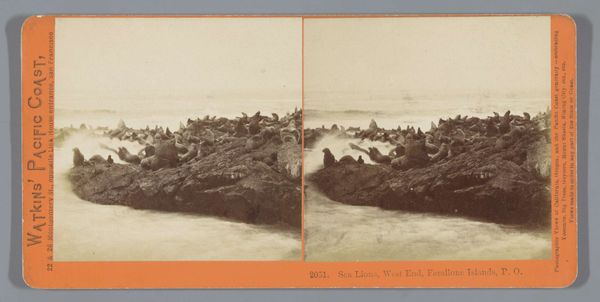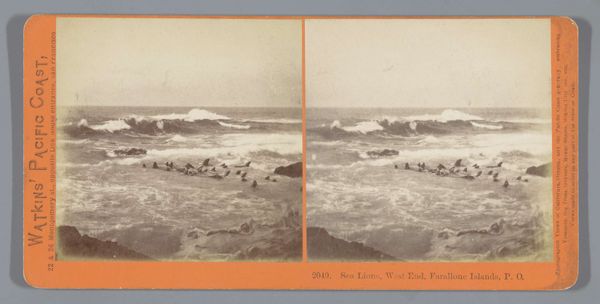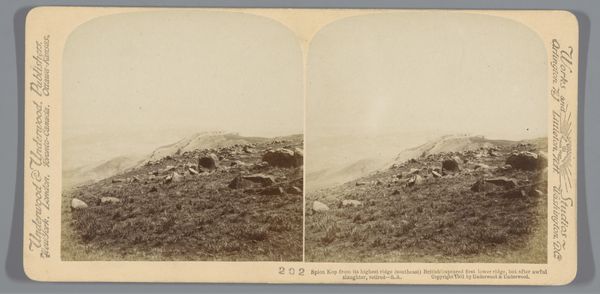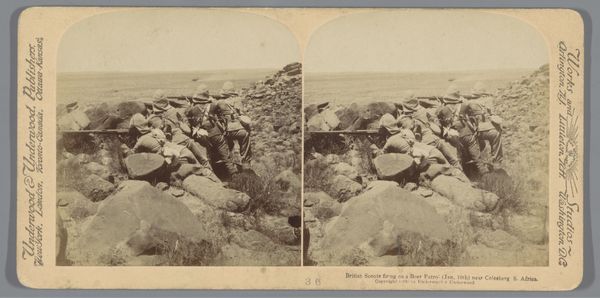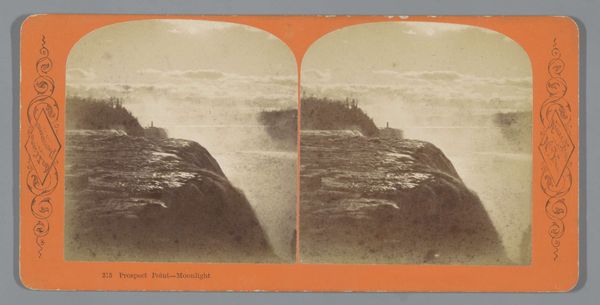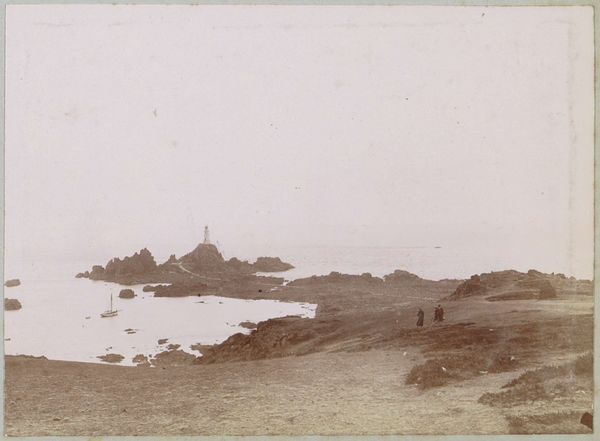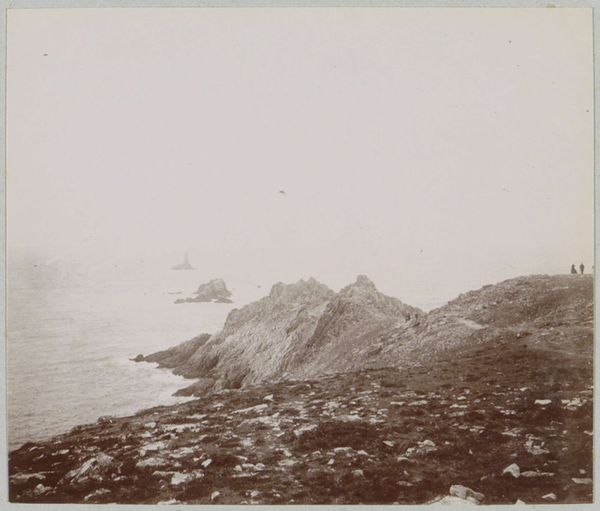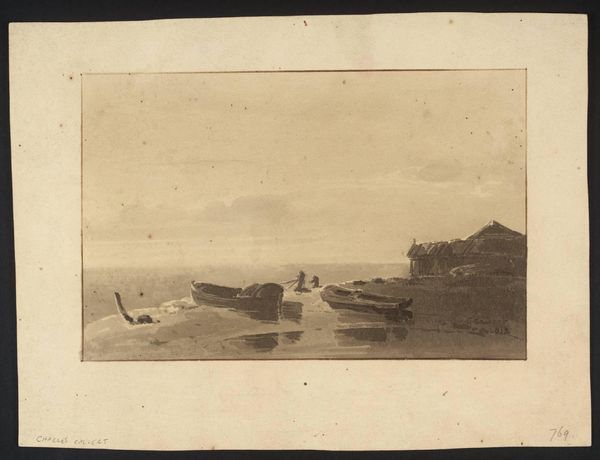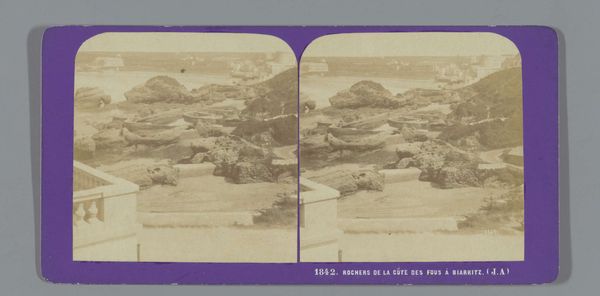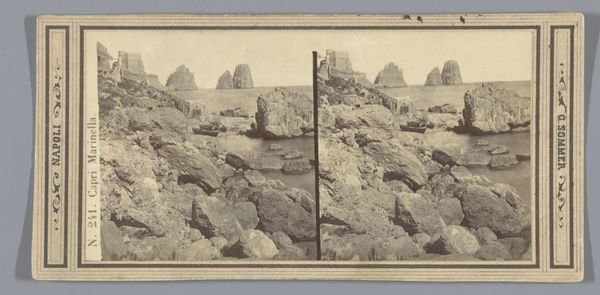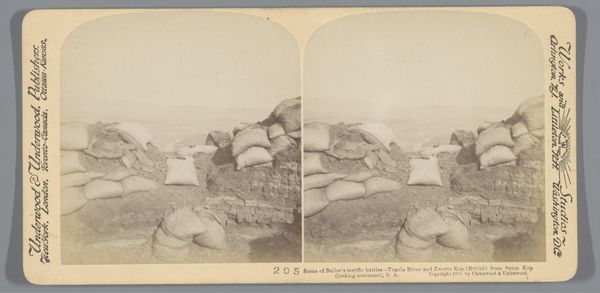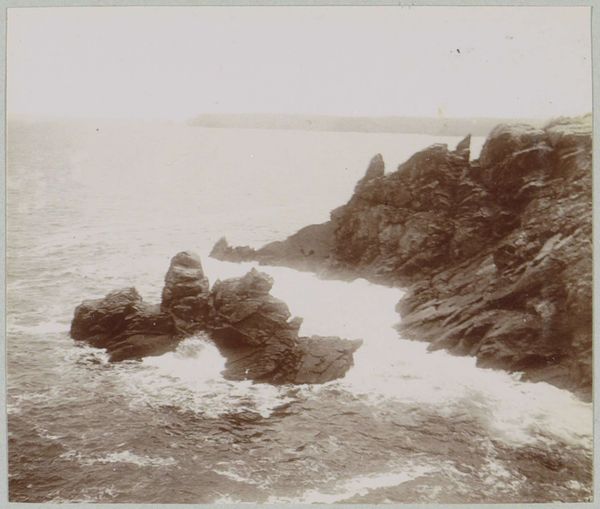
photography, gelatin-silver-print
#
pictorialism
#
landscape
#
photography
#
gelatin-silver-print
#
realism
Dimensions: height 87 mm, width 177 mm
Copyright: Rijks Museum: Open Domain
Curator: Looking at this gelatin-silver print, it feels almost prehistoric, doesn't it? I am seeing an isolated land, far away from industrial revolution and closer to natural landscapes. Editor: It does evoke that feeling, that primal rawness of nature, untouched. Carleton Watkins captured this scene, “Zeehonden bij de Farallon-eilanden”, sometime between 1871 and 1891. Curator: "Zeehonden." So these are seals basking along the West End of the Farallon Islands. Notice how Watkins has framed them? They are piled upon the craggy rocks, a dark mass against the ethereal expanse of the Pacific. The seals become symbols, emblems of wild untamed places beyond our ordinary human experience. Editor: Precisely. It’s interesting to consider Watkins’ broader photographic project here. His commissions for tourism, documentation of these territories, his position on manifest destiny and the cultural reception. Images like this romanticized the landscape at the time and fed an appetite for the exotic. The rugged charm of the island populated with these creatures became its own type of visual currency. Curator: That visual currency extended to scientific documentation too. The way Watkins captures the specific light conditions helps viewers understand these isolated and little-seen places, their role within an ecosystem we depend upon but rarely access. This photo reminds viewers about places needing care and consideration in their preservation. Editor: It’s definitely a layered image when we start to think about environmental politics too. Think about the pressures impacting wildlife then, compared to now... the very idea of preservation taking center stage. Did these sea lions signify a kind of abundance, a resource, a subject for exploitation? Or was Watkins hinting at the vulnerability of such concentrated life, easily disrupted. Curator: It becomes, like many powerful images, a focal point for anxieties and dreams. The way those sea lions pile one on top of another – there is strength, survival in numbers. But also potential risk and precarity should resources dwindle. The artist evokes themes found within folklores about human relationships with wild and untamed nature and beings within these territories. Editor: Agreed. By making these places and these creatures visible, Watkins inadvertently framed questions about ownership, custodianship and respect which continue to evolve through cultural attitudes. Curator: Watkins allows us to see this landscape through time as not separate from ourselves, it lives and breathes in our imagination. Editor: Exactly! And prompts us to ask deeper questions regarding our collective image-making around natural environments today.
Comments
No comments
Be the first to comment and join the conversation on the ultimate creative platform.
